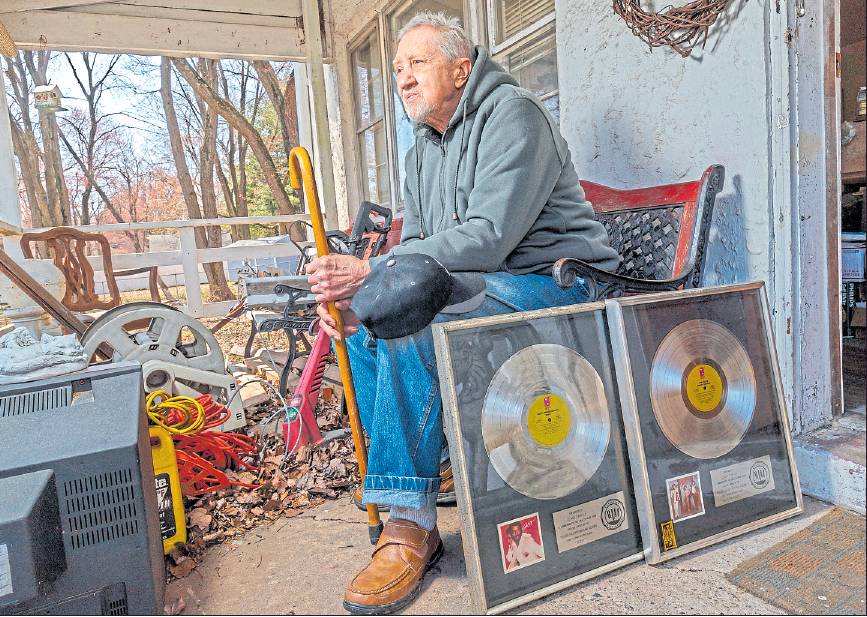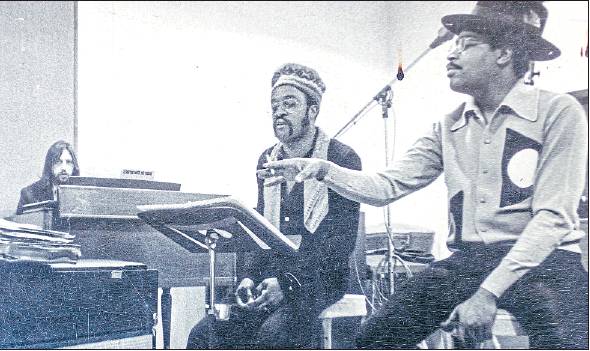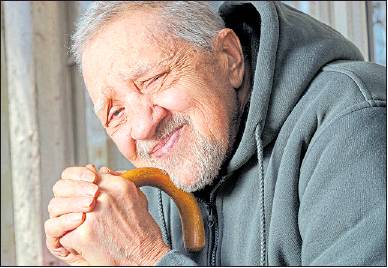BROKE IN PHILADELPHIA
Hunger Rising Among Seniors
Malnutrition is becoming a growing concern in Philadelphia for those 60 and older.
By Alfred Lubrano STAFF WRITER
Lenny Pakula is still alive. Either luck or God is the reason, he’ll tell you. He can’t decide.
Diabetes, colon cancer, poverty, hunger, malnutrition — the 73-year-old former musician has somehow survived it all. Once, he was widely known as the keyboards player for Philadelphia International Records, and you can still hear him on such songs as “Me and Mrs. Jones” by Billy Paul, “I’ll Be Around” by the Spinners, or “TSOP” (“The Sound of Philadelphia”) by MFSB, also known as the theme song for the show Soul Train.
But studio musicians don’t score big checks and daiquiris-by-the-pool lives. Now, Pakula lives in a Feasterville bungalow on disability payments, about $3,000 below the annual federal poverty level of $12,500 for a single person. He credits Aid for Friends, a nonprofit meal-delivery service in Northeast Philadelphia, for detecting his malnutrition, and for keeping him alive.
“It’s been a struggle,” said Pakula, who lost his left leg to the diabetes and keeps in touch with old friends via rotary phone. “But I learned nutrition is important. Nutrition is everything.”
Malnutrition is “an under-recognized problem” that may be on the rise among senior citizens here and throughout the country as hunger increases, according to the Philadelphia Corporation for Aging (PCA) and other health professionals.
Last month, PCA convened a coalition of nonprofits, health-care agencies, and others to address malnutrition among older Philadelphians.
Although it’s difficult to ascertain precise malnutrition statistics, it’s clear that hunger among seniors is growing, said Allen Glicksman, PCA’s director of research.
His analysis shows that between 2015 and 2018, hunger among people aged 60 and over in the city rose from 11 percent to 12.25 percent, an increase from 32,000 to 38,000 people. Glicksman’s statistics are based on figures from the Philadelphia Public Health Management Corporation’s Household Health Survey. People were asked whether they were skipping meals because they lacked money.
“The trend is something to worry about,” Glicksman said. The survey also showed that older people who can’t afford meals are more likely to be sick, obese, and to have fallen in the last year.
“The problem,” Glicksman said, “is poverty, poverty, poverty.”
Just as Philadelphia has the highest poverty rate among the most populous U.S. cities (26 percent), he added, its senior poverty rate is the highest among the biggest cities (23 percent of about 300,000 people aged 60 and above).
“We must be alarmed when we see increases in hunger among older adults because of the inescapable connection to malnutrition,” said Robert Blancato, national coordinator of Defeat Malnutrition Today, an advocacy group in Washington.
An imbalance
Malnutrition occurs when a person doesn’t eat a proper amount of calories, protein, or minerals, scientists say. An imbalance is created, caused by eating too little food, or too much of the wrong kinds of food — often cheap food high in fat and salt purchased by people in poverty with little choice in diet, health professionals say.
Especially prevalent among seniors, malnutrition can lead to weight loss, reduced immunity to disease, frailty, and debilitation. Older people in long-term care facilities or hospitals face heightened risk of malnutrition, according to the Alliance for Aging Research. Malnutrition costs the health system about $50 billion annually, according to the alliance.
Along with a scarcity of food (or a surfeit of non-nutritious food), sometimes bad teeth, a lack of appetite from disease or medication, or an inability to leave the home and shop for food can generate malnutrition among seniors, said Rose Ann DiMaria-Ghalili, a nursing professor at Drexel University.
Roughly one out of two people aged 65 and older are malnourished, or are at risk of becoming malnourished, Blancato said.
He added that the nation needs to increase funding for nutrition programs that help older adults, and that doctors must more accurately screen for malnutrition.
Doing without
“Every day, I deal with hunger,” said Linda Woldsmidt, 63, of Kensington. She lives on disability payments, having lost her right leg to diabetes.
“I live alone, and sometimes I do without meals,” said Woldsmidt, a twice-widowed former factory worker whose malnutrition was ameliorated by the Lutheran Settlement House senior center and local churches. “So much of my life, I ate the wrong foods — candy, ice cream, soda.”
Woldsmidt said an impoverished life is an intolerable existence: “I just barely make it.”
Growing social isolation among seniors can contribute to malnutrition, said Brian Duke, system director of senior services with Main Line Health, a health system in Philadelphia’s western suburbs. “Why are isolated people struggling to get food when it’s available?” asked Duke, who was part of the PCA conference. “Why are we not getting to the person? We’ve never had a successful answer to that.”
Just soup
Marge Alessi, 92, of Norristown, has lived alone for years with arthritis. Then, malnutrition crept into her life.
“I tried to eat a balanced diet,” she said. “But I just can’t cook anymore.”
Alessi was eating mainly canned soup each day, according to Soo Lee, director of nutrition services at the Senior Adult Activities Center of Montgomery County. “She used to be very independent, but she developed problems after her husband passed,” Lee said.
The center helped feed Alessi. “We got her nourished again,” Lee said.
No food to heal
Ironically, said Lynn Trombetta, assistant executive director of Aid for Friends in Northeast Philadelphia, Americans assume that with Medicare and Social Security, seniors are covered.
But, she added, medicine and food costs keep rising while incomes remain fixed. People are losing their homes, rationing their insulin doses, eating junk food — and now face proposed food stamp cuts from the federal government, Trombetta said.
“They’re not getting enough milk, proteins, vegetables to help them heal after surgery, to keep their bones strong, to fight malnutrition,” she added.
Trombetta says her organization feeds 1,500 people throughout the year in Philadelphia and its four surrounding counties.
“But there are so many more out there, risking malnutrition, that we don’t get to,” she said.
“What happens to them?”
Philadelphia Media Network is one of 21 news organizations producing Broke in Philly, a collaborative reporting project on solutions to poverty and the city’s push toward economic justice. See all of our reporting at brokeinphilly.org. alubrano@phillynews.com
215-854-4969
AlfredLubrano
32,000 Philadelphians age 60 and over experiencing hunger in 2015
38,000 Philadelphians age 60 and over experiencing hunger in 2018
SOURCE: Allen Glicksman, Philadelphia Corp. for Aging director of research



